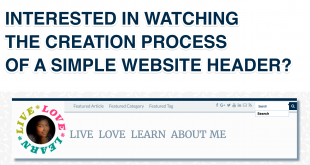The very first step before embarking on any grand project is visualising the outcome; beginning with the end in mind. In web development, this phase is usually called Discovery. I spoke to a few Web Developer friends and also researched over the Internet and came up with this simple 10-question “Discovery Questionnaire” to aid you in the discovery process.
1. Why do I want a website?
Before commencing any project the motive behind it acts as the key motivation. Most web development projects will require upfront investment in terms of time and money. The answer to this question reemphasizes your motivation for completing this project.
2. What is my website about?
A website can be a calling card, a portfolio or a virtual shop. The answer to this question will help choose the right style for your website.
Some examples:
- If your website is about your business where you showcase the services your company offers, then you can go for a Static website with a few pages/sections introducing your company and its services.
- If your website showcases your portfolio (e.g. articles, reviews, photographs, paintings), then you can choose a Blog style website where you can regularly update your portfolio and display them.
- If you sell products or services on your website, then you can go for aneCommerce website where visitors can choose and pay for your products or services.
3. How frequently is my website updated and by whom?
This is another question to be asked during the Discovery Phase to understand the website style.
Some examples:
- If the website is updated infrequently and on a need basis only (e.g. amending the address/phone number of your company), then a content management system is not required.
- If the website is frequently updated by you (e.g. uploading your paintings as you create them), then a simple CMS (content management system) is required, where you can go in and make your updates or add additional content.
- If the website is frequently updated by you and other members of your team (e.g. uploading products that your company has released), then a complex CMS (content management system) is required, where multiple users can access and update your website.
4. Who is my target audience?
Understanding the demographics of your target audience will help set up the design and functionality of your website.
Some examples:
- If your website caters to ladies interested in Scrapbooking, then you can include pretty colours and beautiful patterns in your website design.
- If your website is intended for mobile visitors, then you can develop the website to be responsive and mobile friendly.
- If your target audience is going to be students for some courses you offer on your website, then you can include membership-only functionality and members-only areas on your website.
5. Do I have online interactions on my website?
Depending on whether and how you interact with your visitors, additional functionality will need to be added to your website.
Some examples:
- If you are expecting only one-way interaction through the website (e.g. a request for quote, a friend dropping by to say “Hi”, testimonials from a client), then include a simple contact form where the visitor can leave their message or request and their contact details.
- If you are expecting a limited two-way interaction through the website (e.g. queries about your products), then include a messaging functionality into your website. You can limit the visibility of these interactions so that the conversation is only visible to a selected set of people.
- If you are expecting an extended discourse on your website (e.g. discussion about an article you have written, discussions amongst your visitors about the products you offer), then include commenting and/or forum functionality into your website.
- If you want your website or your article to be shared in Social Media, then include some social media links or buttons that will make it easy for your visitors to do that.
6. What are my online marketing goals?
You can have online marketing goals broadly in the below 5 areas:
- Branding: Making yourself and/or your company popular on the internet
- Engagement: Interaction with your website followers and/or prospective clients
- Visitor Conversion: Converting your website visitors into subscribers, prospects, sales or registrations once they land on your website
- Sales: Selling products or services on your website
- Revenue: Revenue through sales, affiliates, referrals and paid subscriptions
Additional functionality will need to be added to your website to meet your online marketing goals.
SOME EXAMPLES:
- Search Engine Optimisation (SEO) so that visitors come across your website when they search for a specific keyword or phrase
- Social Media links or buttons (e.g. Facebook Like button) to encourage visitor interaction (Engagement)
- Placement of a simple form requesting your users to subscribe to your weekly newsletter subscriptions (Visitor Conversion)
- Payment gateway within your website that will help visitors purchase and pay for your products or services without leaving your website (Sales)
- Setting up a members-only area for paid subscribers (Revenue)
7. Top 10 keywords to find my website.
Keywords are words or phrases that people will use to find your website. Understanding the market of your niche or your business services or products will help set up the website your website optimised for search engines.
8. How do I plan to integrate my website with Social Media platforms?
Social Media platforms are a great place to meet new people, build new business relationships and learn and discuss ideas. When embarking on a web development project it is crucial to consider how you will popularise your website through social media using them to share your content, interact with people there, and guiding them to your website. Additional functionality like automatic sharing of content to your social media platforms can be included based on your requirements.
9. How do I encourage repeat visitors?
Your answers to this question during the Discovery Phase will throw light into any further functionality that may be required on your website.
Some examples:
- If you plan to encourage repeat visitors through your content, then a suitable CMS (content management system) will be required to put up fresh content every day or week.
- If you want to bring in a personal touch to encourage your visitors to interact with you, then you can host monthly live stream events on your website. You will need a specific area on your website to advertise the upcoming date and also a placeholder so users can view the stream from your website itself.
- If you offer services or product sales on your website, then a referral system or a discount code will help attract visitors back to your website.
10. Ten websites that inspire me (Throw in some of your competition too!)
Understanding what you like about other websites will help incorporate those features on your website too.
UPDATE: Checkout my answers here
If you found this article on Discovery helpful, let me know in the comments below or on Facebook or Twitter.
 Sony Simon Live. Love. Learn.
Sony Simon Live. Love. Learn.

What I find so interesting is you could never find this anywhere else.
Thank you.
Nice post! Very useful details. 🙂 My spouse and I are starting up website development work. This helps. Many thanks.